#elizabeth armistead
Explore tagged Tumblr posts
Text
Black Historical Figures I think are cool af!
Happy Black History Month! Below the cut you’ll find a list of 10 black historical figures I think are super cool (and often overlooked in favour of their white/non-black counterparts) all of the figures are inspirational to me in some way and I think anyone can learn from their examples, regardless of race.
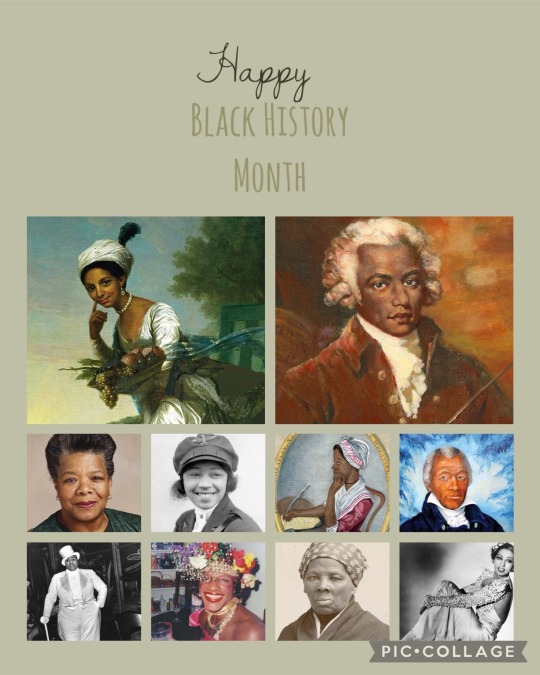
Dido Elizabeth Belle aka Dido Belle Lindsay - staying the course of your beliefs, knowing you deserve better. Knowing what’s right is more than possible.
Joseph Bologne, Chevalier de Saint-George(s) - don’t let anyone take your talents and passions from you. Those who treat you wrong don’t deserve you.
Phillis Weatly/Phyllis Weatly - no matter what you’ve been subjected to, don’t let anyone take your voice from you.
James Armistead Lafayette - fight (spy) for what you believe in. You may turn out to be the most powerful piece in the fight.
Harriet Tubman - no matter the evils of the world, there are good people out there, don’t forget your strengths and allies.
Freda Josephine Baker (née McDonald) best known simply as Josephine Baker - dance and keep dancing, no matter how bad things are. You only live once.
Bessie Coleman - pursue your dreams no matter who tells you that you can’t. You may match them in renown yet.
Gladys Bentley - wear what you want, speak how you want, and love whomever you choose.
Marsha P. Johnson - be here, be queer, and speak truth to power.
Maya Angelou born Marguerite Annie Johnson - write, write, write, oh… and don’t fear life.
#meerathehistorian#black history month#black history month 2024#black history#queer history#black lives matter#dido elizabeth belle#joseph bologne#chevalier St Georges#history#phillis wheatley#american revolution#James Armistead Lafayette#harriet tubman#josephine baker#bessie coleman#gladys bentley#maya angelou#marsha p johnson#queer#lgbtq+#bisexual#lesbian
63 notes
·
View notes
Text
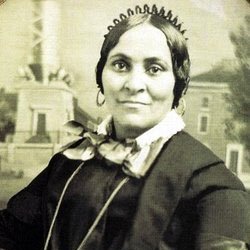


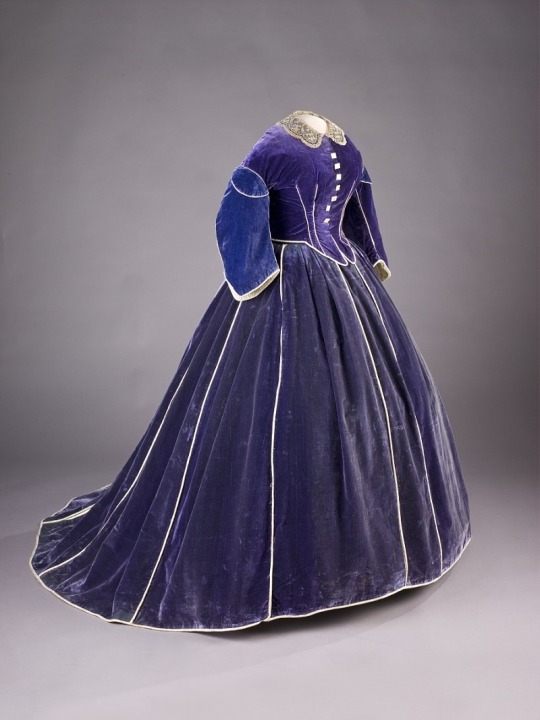

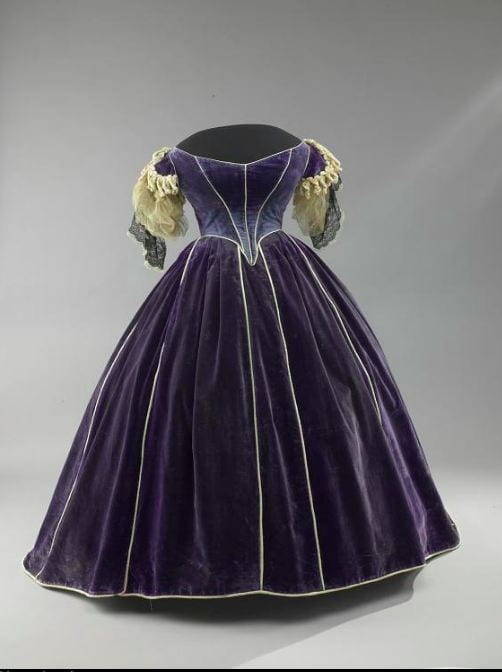

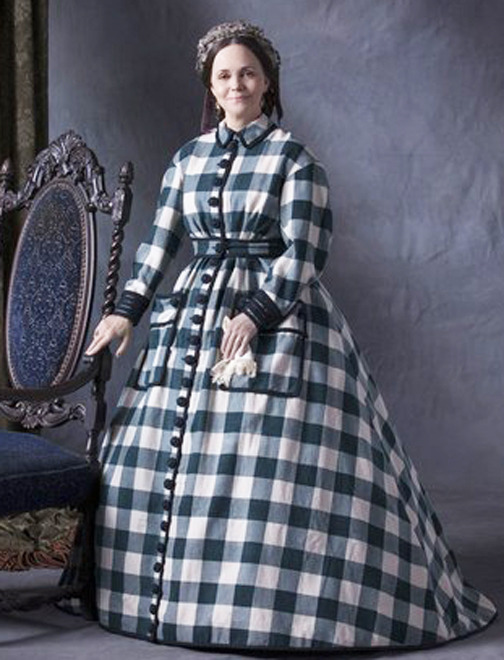
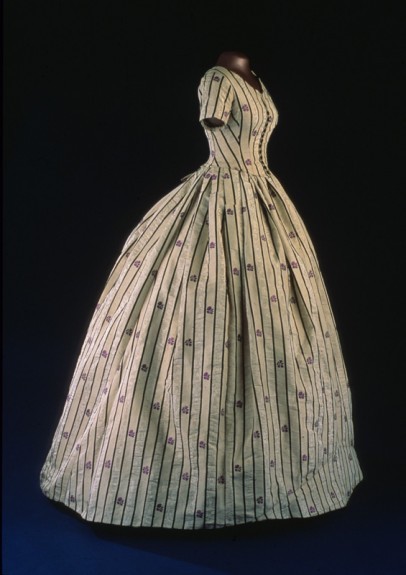
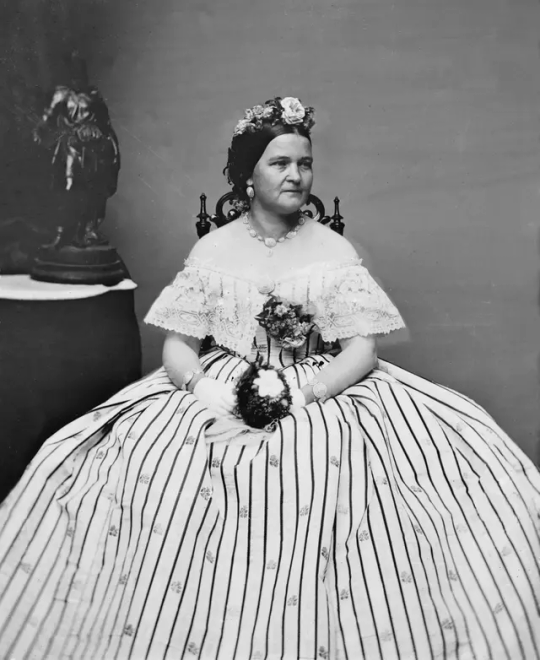
In honor of Juneteenth, this post is dedicated to Elizabeth Hobbs Keckley (1818-1907), activist and seamstress, an extraordinary figure who worked towards abolition and should be more well known.
Elizabeth “Lizzy” Hobbs was born in 1818, an illegitimate daughter of Agnes “Aggy” Hobbs, who taught her dressmaking skills, and Colonel Armistead Burwell, the man who held them as his slaves.
At the age of 14, she was separated from her mother when the Burwells sent her to work for their son, Reverend Robert Burwell, and his wife, Margaret. They and a neighbor beat her without reason, and eventually sent her to work for store owner Alexander McKenzie Kirkland, who would repeatedly assault her over the course of the next few years. As a result of one of Kirkland’s assaults, in 1839 she gave birth to a son, who she named George, after her assumed father who had been taken away in her childhood.
After the death of Armistead Burwell, she and her son were inherited by Hugh A. Garland, the husband of her white half sister, Ann, and returned to the family that owned them. In 1847, the Garlands took Agnes, Elizabeth, and George Hobbs with them when they moved to St. Louis, where Hugh Garland continued to practice law (including serving as John Sanford’s defense attorney. John Sanford was the man who held Dred Scott as a slave). During this time, she became an accomplished seamstress, and she Garlands became increasingly dependent on her as a major source of income.
In 1850, she met and developed a relationship with James Keckley, a free African American man, who she refused to marry until she and her son were free as well. Hugh Garland initially refused to free her and her son, but eventually agreed to do so for the price of $1,200. With an end to her and her son’s slavery in sight, in 1852 she agreed to marry James Keckley.
Over the next three years, her attempts at saving the required sum were repeatedly foiled by the Garlands, and eventually she needed to seek help from another wealthy family in St. Louis who were more sympathetic to her plight, and gave her a loan, thus allowing her to finally purchase freedom for herself and her son in 1855. The $1,200 dollars she spent would be worth around $43,320 today.
By 1860 she was able to repay the family who had given her a loan, and she separated from her husband due to his alcohol abuse, which she claimed turned him into “a burden instead of helpmate”. She then moved to Washington D.C., and began to establish herself as a prominent dressmaker for the elite women in the area, especially the wives of politicians.
By 1861, her reputation was such that she was recommended to soon-to-be First Lady Mary Todd Lincoln. Mary received the first dress on the morning of her husband’s inauguration. Upon seeing Mary in the dress, Abraham Lincoln (who did not find his wife attractive) said "You look charming in that dress. Mrs. Keckly has met with great success”. Elizabeth would serve as Mary’s personal dressmaker for the next four years, and the two women grew closer after they both lost a son.
Along with her work as a seamstress, Elizabeth also helped others seeking freedom in Washington D.C.. In doing so, she founded the Contraband Relief Association, which helped the many groups of people who had escaped their enslavers, and met many famous abolitionists, including Fredrick Douglass and Sojourner Truth, including later arranging a 1864 meeting between Sojourner Truth and Abraham Lincoln.
After Abraham Lincoln was assassinated, Elizabeth was an important source of comfort to Mary. However, in 1867, an unfortunate misunderstanding caused a rift in the friendship between the two women, and they fell out entirely in 1868, damaging Elizabeth’s and resulting in the loss of many clients. Despite this, she continued to work as a dressmaker until 1892, when she became the head of a department dedicated to the “Sewing and Domestic Science Arts” at a university in Ohio. Unfortunately, a year later she was forced to resign after suffering from a stroke, and spent the rest of her days at a foundation that helped destitute African American women and children which she had helped to found years earlier.
#thought(s) from yours truly#history#regency#victorian#edwardian#19th century#20th century#1810s#1818#1830s#1839#1840s#1847#1850s#1850#1852#1855#1860s#1860#1861#1864#1865#1867#1868#1890s#1892#1900s#1907#dress history#slavery
14 notes
·
View notes
Note
I would love more info on that Katie Hickman book if you don't mind!
I can do that! It's Courtesans: Money, Sex, and Fame in the 19th Century, by Katie Hickman. The five women profiled are Sophia Baddeley, Elizabeth Armistead, Harriette Wilson, Cora Pearl and Catherine Walters. It's been a while since I read it, but if I kept it for the shelf, it was usually pretty good.
And now that I'm looking it up, I feel like I need to read Hickman's other book Daughters of Britannia: The Lives and Times of Diplomatic Wives.
4 notes
·
View notes
Text

"Portrait of Elizabeth Armistead, Mrs. Charles JAmes Fox" by Joshua Reynolds, 1789.
2 notes
·
View notes
Note
17, 18, 19 and 33 for the book asks :)
RAAAAAAH THANK YOU 🫶
17. top five books of the year
out of everything i read this year (for the first time, not rereads) i'd have to say in no particular order: gideon the ninth by tamsyn muir, flowers in the attic by v.c. andrews, my dark vanessa by kate elizabeth russell, alias hook by lisa jensen, and black sheep by rachel harrison
18. least favorite books of the year
aaaaaaaugh ok so I think no book has ever evoked such rage in my as Flux by Orion Carloto and it's literally bc 90% of the book is blank paper deadass, so that would be my #1 worst book of the year. I did a lot better this year at DNFing books I wasn't vibing with bc I'm tired of needlessly torturing myself lolol but also I was severely disappointed by the midnight library by matt haig, the regrets by amy bonnaffons, america the beautiful? by blythe roberson, everything I know about love by dolly alderton, and death valley by melissa broder
19. best non-fiction books you read this year
goblin mode by mckayla coyle is a really cute self-improvement style book with tips on how to live your best goblin life and it was just a fun read all around. I also deeply enjoyed cultish by amanda montell, and trust me, i'm doctor ozzy by ozzy osbourne (the icon himself)
33. did you DNF anything?
so manny...... sooom nany . so many
girl in pieces by kathleen glasgow, princesses behaving badly by linda rodriguez mcrobbie, the cartographers by peng shepherd, on earth as it is on television by emily jane, sex and rage by eve babitz, tales of the city by armistead maupin, the boston girl by anita diamont, my best friend's exorcism by grady hendrix, perfume: the story of a murder by patrick suskind, home is where the bodies are by jeneva rose, how to kill a guy in ten ways by eve kellman, masters of death by olivie blake, cleopatra and frankenstein by coco mellors.... the list goes on. some of these i have the intention of going back to eventually, and some i just really didn't like
1 note
·
View note
Text
ELIZABETH ARMISTEAD // COURTESAN
“She was a courtesan and, later, the wife of statesman and politician Charles James Fox. Her relationship with and marriage to Fox was one of the most famous and controversial of their age. She was one of the most infamous brothel-keepers of the time and after being taken out of the brothel by Lord Bolingbroke, she was made his mistress. Her standing attracted the interest of many men including the future George IV, and she maintained close friendships with the young politicians of the Whig party. Her passionate love affair with her friend Charles Fox led to problems with debt, and they lived quietly and simply together. They had no children and despite worry that he might wed someone else, Fox resolved to marry his mistress secretly. For seven years, this was kept a secret and was generally accepted when it had become public. She was well-loved by those of all classes as shown at her funeral.”


0 notes
Text

Elizabeth Hobbs Keckley (February 1818 - May 1907) is known as Mary Lincoln’s dressmaker and confidant and as the author of Behind the Scenes By Elizabeth Keckley, Formerly a Slave, But More Recently Modiste, and Friend to Mrs. Abraham Lincoln, Or, Thirty Years a Slave, and Four Years in the White House (1868).
She was born enslaved on the Col. Armistead Burwell farm in Dinwiddie County, Virginia, to Agnes and George Pleasant Hobbs (her biographer asserts that Col. Burwell was her father).
She was sent to live with her master’s eldest son in North Carolina. She endured whippings and beatings from the village schoolmaster, ostensibly to subdue her “stubborn pride,” she wrote. She became pregnant as the result of a rape. She was sent back to Virginia to live with her master’s daughter. She accompanied the Garland family when it moved to St. Louis. She began work as a seamstress and dressmaker, skills she had learned from her mother. Her work helped support the entire Garland family.
Her patrons soon included some of St. Louis’s most elite citizens. She married James Keckley (1852-60) after Garland agreed to a purchase price of $1200. She borrowed from some of her wealthy patrons, she secured her freedom and that of her son. She left her husband and settled in DC.
She built a successful dressmaking career becoming acquainted with Mary Lincoln. Her work and friendship with Mary Lincoln permitted her a unique view of events. She became a prominent figure in DC’s free African American community. After Lincoln’s assassination, she stayed with the First Lady for a time, but the publication of her book, in which she revealed private details about life inside the White House, was controversial and strained their relationship. The negative reaction to the book in DC’s white community affected her ability to earn a living. She took a faculty position at Wilberforce University as head of the Department of Sewing and Domestic Science Arts.
A purple velvet gown she designed and worn by Mary Lincoln at her husband’s second inauguration can be viewed at the Smithsonian’s American History Museum. #africanhistory365 #africanexcellence
1 note
·
View note
Text
Rock Hudson
Rock Hudson (nascido Roy Harold Scherer Jr .; 17 de novembro de 1925 – 2 de outubro de 1985) foi um ator americano. Uma das estrelas de cinema mais populares de seu tempo, ele teve uma carreira na tela que durou mais de três décadas. Ele foi uma figura proeminente na Era de Ouro de Hollywood .
Ele alcançou o estrelato com seu papel em Magnificent Obsession (1954), seguido por All That Heaven Allows (1955) e Giant (1956), pelo qual recebeu uma indicação ao Oscar de Melhor Ator . Hudson também encontrou sucesso contínuo com uma série de comédias românticas coestreladas por Doris Day : Pillow Talk (1959), Lover Come Back (1961) e Send Me No Flowers (1964). Durante o final da década de 1960, seus filmes incluíram Seconds (1966), Tobruk (1967) e Ice Station Zebra (1968). Insatisfeito com os roteiros de filmes que lhe foram oferecidos, Hudson voltou-se para a televisão e foi um sucesso, estrelando a popular série de mistério McMillan & Wife (1971–1977). Seu último papel foi como ator convidado na quinta temporada (1984-1985) da novela Dynasty da ABC , até que uma doença relacionada à AIDS o impossibilitou de continuar.
Embora fosse discreto quanto à sua orientação sexual, era sabido entre os colegas de Hudson na indústria cinematográfica que ele era gay . Em 1984, Hudson foi diagnosticado com AIDS . No ano seguinte, ele se tornou uma das primeiras celebridades a revelar seu diagnóstico de AIDS. Hudson foi a primeira grande celebridade americana a morrer de uma doença relacionada à AIDS, em 2 de outubro de 1985, aos 59 anos.
Vida pessoal
Enquanto sua carreira se desenvolvia, Hudson e seu agente, Henry Willson , mantiveram a vida pessoal do ator fora das manchetes. Em 1955, a revista Confidential ameaçou publicar uma exposição sobre a homossexualidade secreta de Hudson . Willson impediu isso ao revelar informações sobre dois de seus outros clientes. Willson forneceu informações sobre os anos de prisão de Rory Calhoun e a prisão de Tab Hunter em uma festa em 1950. De acordo com alguns colegas, a atividade homossexual de Hudson era bem conhecida em Hollywood ao longo de sua carreira, e as ex-colegas de elenco Julie Andrews , Mia Farrow , Elizabeth Taylor e Susan Saint James alegaram que sabiam de sua homossexualidade e guardaram o segredo de Hudson para ele, assim como as amigas Audrey Hepburn e Carol Burnett .
Logo após o incidente do Confidential , Hudson se casou com a secretária de Willson, Phyllis Gates . Gates escreveu mais tarde que ela namorou Hudson por vários meses, morou com ele por dois meses antes de sua proposta de casamento surpresa e se casou com Hudson por amor e não (como foi relatado mais tarde) para evitar uma exposição do passado sexual de Hudson. A cobertura da imprensa do casamento citou Hudson dizendo: “Quando conto minhas bênçãos, meu casamento está no topo da lista.” Gates pediu o divórcio após três anos em abril de 1958, citando crueldade mental. Hudson não contestou o divórcio e Gates recebeu pensão alimentícia de US$ 250 por semana durante 10 anos. Ela nunca se casou novamente.
De acordo com a biografia Rock Hudson: His Story (1986) de Hudson e Sara Davidson , Hudson era um bom amigo do romancista Armistead Maupin , que afirma que os dois tiveram um breve caso. O livro também cita alguns dos amantes de Hudson, incluindo Jack Coates; Tom Clark (que publicou o livro de memórias Rock Hudson: Friend of Mine ), o ator e corretor da bolsa Lee Garlington, e Marc Christian (nascido Marc Christian MacGinnis), que mais tarde ganhou um processo contra o espólio de Hudson.
Em 2005, Bob Hofler publicou uma biografia do agente de Hudson, Henry Willson , intitulada O Homem que Inventou Rock Hudson . Ele disse ao The Village Voice que Phyllis Gates tentou chantagear Hudson sobre suas atividades homossexuais. A revista de notícias LGBTQ The Advocate publicou um artigo de Hofler, que afirmava que Gates era na verdade uma lésbica que acreditava desde o início de seu relacionamento que Hudson era gay.
Uma lenda urbana afirma que Hudson “se casou” com Jim Nabors no início dos anos 1970. Não apenas o casamento entre pessoas do mesmo sexo não era legalizado por nenhum estado americano na época, mas, pelo menos publicamente, Hudson e Nabors não eram nada mais do que amigos.
A piada já estava no mainstream nessa época. Na edição de outubro de 1972 da revista MAD (edição nº 154), um artigo intitulado “Ao assistir televisão, você pode ter certeza de ver…” – a colunista de fofocas ‘Rona Boring’ afirma: “E não há um grão de verdade no boato cruel de que a estrela de cinema e TV Rock Heman e o cantor Jim Nelly eram secretamente casados! Rock e Jim são apenas bons amigos! Repito, eles não são casados! Eles nem estão firmes!” Ao longo dos anos, o boato persistiu e continuou a se espalhar. Como resultado, Hudson e Nabors nunca mais se falaram.
Embora tenha sido criado como católico romano , Hudson mais tarde se identificou como ateu . Uma semana antes de Hudson morrer, seu publicitário Tom Clark pediu a um padre para visitá-lo. Hudson fez uma confissão no leito de morte , recebeu a comunhão e recebeu os últimos ritos . Hudson também foi visitado por Shirley e Pat Boone .
Politicamente, Hudson era um republicano conservador ; ele fez campanha e votou em Barry Goldwater na eleição presidencial dos Estados Unidos de 1964.
Doença e morte
Desconhecido do público, Hudson foi diagnosticado com AIDS em 5 de junho de 1984, três anos após o surgimento do primeiro grupo de pacientes sintomáticos nos Estados Unidos , e um ano após a conclusão inicial dos cientistas de que o HIV causa AIDS. Nos meses seguintes, Hudson manteve sua doença em segredo e continuou a trabalhar enquanto, ao mesmo tempo, viajava para a França e outros países em busca de uma cura, ou pelo menos tratamento para retardar a progressão da doença.
Em 16 de julho de 1985, Hudson se juntou a sua velha amiga Doris Day para uma entrevista coletiva em Hollywood, anunciando o lançamento de seu novo programa de TV a cabo Doris Day’s Best Friends , no qual Hudson foi filmado visitando o rancho de Day em Carmel, Califórnia, alguns dias antes. Ele parecia magro e pálido e falou muito pouco durante o segmento, a maior parte do qual consistia em Day e Hudson andando por aí enquanto a gravação de Day de “ My Buddy ” tocava ao fundo, Hudson dizendo que se cansava rapidamente. Sua aparência emaciada foi um choque tão grande que a reunião foi transmitida repetidamente em noticiários nacionais naquela noite e nos dias seguintes, com os meios de comunicação especulando sobre a saúde de Hudson. Day reconheceu mais tarde: “Ele estava muito doente. Mas eu simplesmente ignorei isso e saí, coloquei meus braços em volta dele e disse 'Estou feliz em ver você. ' "
Dois dias depois, Hudson viajou para Paris, França, para outra rodada de tratamento. Depois que Hudson desmaiou em seu quarto no Ritz Hotel em Paris em 21 de julho, seu publicitário Dale Olson divulgou uma declaração alegando que Hudson tinha câncer de fígado inoperável . Olson negou relatos de que Hudson tinha AIDS e disse apenas que estava passando por testes para "tudo” no Hospital Americano de Paris. Quatro dias depois, em 25 de julho de 1985, o publicitário francês de Hudson, Yanou Collart, confirmou que Hudson, de fato, tinha AIDS. Ele estava entre as primeiras celebridades tradicionais a serem diagnosticadas com a doença.
Hudson voou de volta para Los Angeles em 30 de julho. Ele estava tão fraco que foi removido de maca do Boeing 747 da Air France que ele havia fretado; ele e seus assistentes médicos eram os únicos passageiros. Ele foi levado de helicóptero para o UCLA Medical Center, onde passou quase um mês em tratamento adicional. Ele recebeu alta do hospital no final de agosto de 1985 e voltou para sua casa em Beverly Hills, Los Angeles, para cuidados paliativos particulares.
Por volta das 9h do dia 2 de outubro de 1985, Hudson morreu durante o sono de complicações relacionadas à AIDS em sua casa em Beverly Hills, aos 59 anos. Hudson solicitou que nenhum funeral fosse realizado. Seu corpo foi cremado horas após sua morte e um cenotáfio foi estabelecido mais tarde no Cemitério Forest Lawn em Cathedral City, Califórnia. Suas cinzas foram espalhadas no canal entre Wilmington, Los Angeles e a Ilha de Santa Catalina.
A revelação do diagnóstico de AIDS de Hudson provocou ampla discussão pública sobre sua homossexualidade. Em Logical Family: A Memoir (2017), o autor gay Armistead Maupin , que era amigo de Hudson, escreve que foi a primeira pessoa a confirmar à imprensa que Hudson era gay em 1985. Maupin explica que confirmou isso a Randy Shilts do San Francisco Chronicle e que ficou irritado que o produtor Ross Hunter , também gay, tenha negado. Em sua edição de 15 de agosto de 1985, a revista People publicou uma história que discutia sua doença no contexto de sua sexualidade. O artigo amplamente simpático apresentou comentários de colegas do show business, como Angie Dickinson , Robert Stack e Mamie Van Doren , que alegaram que sabiam sobre a homossexualidade de Hudson e expressaram seu apoio a ele. Naquela época, a People tinha uma circulação de mais de 2,8 milhões; como resultado desta e de outras histórias, a homossexualidade de Hudson tornou-se pública. A revelação de Hudson teve um impacto imediato na visibilidade da SIDA e no financiamento da investigação médica relacionada com a doença.
Pouco depois do comunicado de imprensa de Hudson revelando sua infecção, William M. Hoffman , autor de As Is , uma peça sobre AIDS que apareceu na Broadway em 1985, declarou: “Se Rock Hudson pode ter, pessoas boas podem ter. É apenas uma doença, não uma aflição moral." Ao mesmo tempo, Joan Rivers foi citada dizendo: "Dois anos atrás, quando organizei um evento beneficente para a AIDS, não consegui que nenhuma grande estrela aparecesse. A admissão de Rock é uma maneira horrenda de chamar a atenção do público americano para a AIDS, mas ao fazê-lo, Rock, em sua vida, ajudou milhões no processo. O que Rock fez exige verdadeira coragem." Morgan Fairchild disse que "a morte de Rock Hudson deu um rosto à AIDS." Num telegrama que Hudson enviou para um evento beneficente de Hollywood contra a SIDA em Setembro de 1985, o Commitment to Life, ao qual estava demasiado doente para comparecer, Hudson disse: "Não estou feliz por estar doente. Não estou feliz por ter SIDA. Mas se isso é ajudar os outros, posso pelo menos saber que o meu próprio infortúnio teve algum valor positivo."
Pouco depois de sua morte, a People relatou: "Desde que Hudson fez seu anúncio, mais de US$ 1,8 milhão em contribuições privadas (mais que o dobro do valor arrecadado em 1984) foram arrecadados para apoiar a pesquisa sobre a AIDS e cuidar das vítimas da AIDS (5.523 relatadas somente em 1985). Poucos dias após a morte de Hudson, o Congresso reservou US$ 221 milhões para desenvolver uma cura para a AIDS." Os organizadores do evento beneficente Hollywood AIDS Commitment to Life relataram que era necessário mudar o evento para um local maior para acomodar o aumento do público após o anúncio de Hudson de que ele estava sofrendo da doença. Pouco antes de sua morte, Hudson fez a primeira contribuição direta, US$ 250.000, para a amfAR, The Foundation for AIDS Research , ajudando a lançar a organização sem fins lucrativos dedicada à pesquisa e prevenção da AIDS/HIV; foi formada pela fusão de uma organização de Los Angeles fundada por: Michael S. Gottlieb , médico de Hudson, e Elizabeth Taylor , sua amiga e ex-colega de elenco, e um grupo de Nova York.
No entanto, a revelação de Hudson não dissipou imediatamente o estigma da AIDS. Embora o então presidente Ronald Reagan e sua esposa Nancy fossem amigos de Hudson, Reagan não fez nenhuma declaração pública sobre a condição de Hudson. Reagan até aquele momento não havia reconhecido publicamente a AIDS , e não o faria até dois meses depois, em setembro de 1985. No entanto, Reagan telefonou para Hudson em particular em seu quarto de hospital em Paris, onde ele estava sendo tratado, em julho de 1985, e divulgou uma declaração de condolências após sua morte.
Após Hudson revelar seu diagnóstico, surgiu uma controvérsia sobre sua participação em uma cena do drama televisivo Dynasty , na qual ele compartilhou um longo e repetido beijo com a atriz Linda Evans em um episódio (exibido pela primeira vez em fevereiro de 1985). Ao filmar a cena, Hudson sabia que tinha AIDS, mas não informou Evans. Alguns achavam que ele deveria ter revelado sua condição a ela de antemão. Na época, pensava-se incorretamente que o vírus estava presente em pequenas quantidades na saliva e nas lágrimas, mas não houve casos relatados de transmissão por beijo. No entanto, os Centros de Controle e Prevenção de Doenças alertaram contra a troca de saliva com membros de grupos considerados de alto risco para AIDS.
De acordo com comentários feitos em agosto de 1985 por Ed Asner , então presidente do Screen Actors Guild , a revelação de Hudson causou "pânico” incipiente na indústria cinematográfica e televisiva. Asner disse que estava ciente de roteiros sendo reescritos para eliminar cenas de beijo. Mais tarde no mesmo ano, o sindicato emitiu regras exigindo que os atores fossem notificados com antecedência sobre quaisquer cenas de beijo de “boca aberta” com uma cláusula de que eles poderiam se recusar a participar de tais cenas sem penalidade. Linda Evans parece não ter ficado brava com Hudson e pediu para apresentar o segmento do benefício Commitment to Life de 1985 que foi dedicado a Hudson.
Legado
Por sua contribuição à indústria cinematográfica, Hudson recebeu uma estrela na Calçada da Fama de Hollywood (localizada na 6116 Hollywood Blvd). Após sua morte, Elizabeth Taylor , sua co-estrela no filme Giant , comprou uma placa de bronze para Hudson no West Hollywood Memorial Walk . Em 2002, uma Golden Palm Star na Calçada das Estrelas de Palm Springs foi dedicada a ele.
Ações judiciais
Após a morte de Hudson, Marc Christian, ex-amante de Hudson, processou seu espólio com base em “inflição intencional de sofrimento emocional”. Christian alegou que Hudson continuou fazendo sexo com ele até fevereiro de 1985, mais de oito meses depois que Hudson soube que tinha HIV. Embora tenha testado negativo para HIV repetidamente, Christian alegou que sofria de “grave sofrimento emocional” após saber em um noticiário de 25 de julho de 1985 que Hudson havia sido diagnosticado com AIDS. Christian também processou o secretário pessoal de Hudson, Mark Miller, por US$ 10 milhões porque Miller supostamente mentiu para ele sobre a doença de Hudson. Em 1989, um júri concedeu a Christian US$ 21,75 milhões em danos, posteriormente reduzidos para US$ 5,5 milhões. Mais tarde, Christian defendeu a reputação de Hudson por não lhe dizer que estava infectado: “Você não pode descartar a vida inteira de um homem com um único ato. Essa coisa sobre AIDS estava totalmente fora do personagem dele”, afirmou em uma entrevista.
Em 1990, o publicitário residente de Hudson, Tom Clark, e o publicitário Dick Kleiner publicaram Rock Hudson, Friend of Mine . No livro, Clark disse que acreditava que Hudson adquiriu o HIV por meio de transfusões de sangue durante uma cirurgia cardíaca aberta de bypass quíntuplo em 1981, nunca reconhecendo que seu relacionamento ia além de serem colegas de quarto, e caracterizou Christian como desonroso. Christian entrou com um processo de difamação de US$ 22 milhões contra os autores e a editora, acusando-o de ter sido rotulado de “um criminoso, um ladrão, uma pessoa impura, um chantagista, um psicótico, um extorsionário, um falsificador, um perjuro, um mentiroso, uma prostituta, um incendiário e um invasor”.
Em 2010, Robert Park Mills, o advogado que representou o espólio de Hudson contra Christian no tribunal, lançou um livro intitulado Between Rock and a Hard Place: In Defense of Rock Hudson . No livro, Mills discute detalhes do julgamento e também questiona as alegações de Christian contra Hudson.

Rock Hudson
28 notes
·
View notes
Photo

Elizabeth Bridget Armistead or Armitstead (11 July 1750 – 8 July 1842) was a courtesan and, later, the spouse of statesman and politician Charles James Fox. Her relationship with and marriage to Fox was one of the most famous and controversial of their age.
10 notes
·
View notes
Photo

Sir Joshua Reynolds --- Portrait of Mrs. Charles James Fox, formally famed courtesan Elizabeth Armistead. detail. circa 1780
#Sir Joshua Reynolds#Joshua Reynolds#art#art history#art detail#art details#detail#details#painting#painting details#english painting#english#reynolds#18th Century#18th century painting#elizabeth armistead#charles james fox
76 notes
·
View notes
Photo
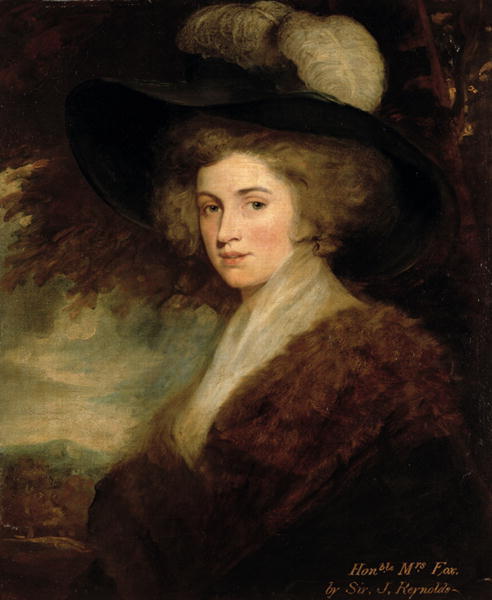
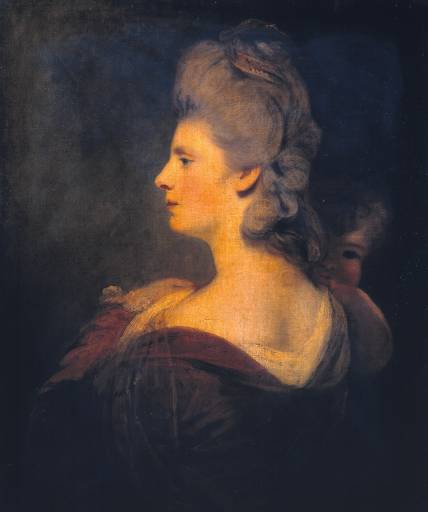
Liv’s Titillating Treasury of Tarts: A Foxy Lady
By her own admission, Elizabeth Armistead was born Elizabeth Cane on July 11, 1750 in humble conditions. Other than that, the details of early life are vague. Various publications said she was the daughter of a herb-vendor in Greenwich, whereas others claimed she was actually born to a shoemaker, a Methodist preacher, or market porter. She most certainly moved to the centre of London as a model for a hairdresser. She may briefly have worked as a dresser and maid to several of London’s finest actresses at Drury Lane Theatre, too. And at some point, Elizabeth’s charms caught the eye of one of London’s leading madams. According to a notation in Sir Joshua Reynolds notebook from 1771, he visited one Mrs Armistead (the name Elizabeth Cane had now started using for herself) at the brothel of Elizabeth Mitchell. Along with Charlotte Hayes and Jane Goadby, Elizabeth Mitchell was one of the most infamous of her trade.
Elizabeth Armistead was charming and pretty (and, for those wondering, apparently possessing a fairly substantial pair of breasts). Her laid-back, cheery nature made her popular with men, particularly important and elite men from society’s uppermost echelons. Her first real keeper was Viscount Bolingbroke. Bolingbroke’s friends teased him about his affection for “the Armistead,” especially following several of them bursting in on an intimate moment between Elizabeth and Bolingbroke. This match cemented Elizabeth as a leading light in London’s bawdy firmament. At one point, Bolingbroke arranged for Elizabeth to try her hand at acting. Critics weren’t that impressed with her ability but they did praise her beauty, her singing voice, the way her figure filled her costume and her smile. Every cloud has a silver lining in the mind of an 18th century man!
After a string of Dukes, rakes and new money, Elizabeth attracted the interest of George, Prince of Wales (latterly, the Prince Regent and King George IV). He made arrangements with his page to pay his addresses to beautiful Elizabeth and their first meeting was in an inn near Bushy Park. According to a humorous anecdote circulated amongst the Devonshire set, the royal affair was discovered, quite accidentally, one night by the Duke of Devonshire’s brother, Lord George Cavendish, one of Elizabeth’s lovers. Lord George, after being refused entry to Elizabeth’s lodgings, drunkenly barged in anyway, went straight to Elizabeth’s rooms and found Elizabeth wrapped in her bed clothes and the Prince of Wales hiding, semi-clothed, behind the door, who proceeded to greet Cavendish and asked him whether it was raining. Lord George reportedly laughed heartily, bowed and made his way home to tell the world. The newspapers were in their element after learning of this affair: the Prince had just broken off a passionate affair with the actress, Mary Robinson, and since both she and Elizabeth Armistead were celebrities, the press revelled in pitting the two women against each other in a bitter rivalry for the Prince’s affections. Mary Robinson was in luck, however, as newspaper rumours suggesting Elizabeth Armistead was a “mattress-vote” (a.k.a. trying to influence the Prince with her deep Whig sympathies) lead to the Prince leaving Elizabeth for his new flame, Grace Dalrymple. Elizabeth attempted to re-kindle the affair but to no avail. To avoid offending the future king, she arranged to take a Continental Tour with several of her noble lovers, but not before purchasing a small country estate in Surrey with the help of the Duke of Marlborough’s brother.
When she returned from the continent, something had changed for Elizabeth. She had always been a staunch Whig and many of her friends and lovers were members or supporters of the party. One of her long-time friends was the unkempt, uncouth Whig leader and firebrand, Charles James Fox. Their relationship had never been romantic, nor even sexual but by 1783, the pair had settled down into a monogamous, loving relationship. In 1795, Fox and Armistead secretly married and spent their time most of their time either entertaining or gardening, which contrasts greatly with the chaos of their earlier lives. Fox came clean about his marriage in 1802 when he wished Elizabeth to be by his side, as his wife, when he was honoured by Napoleon. In 1806, Fox died of dropsy; reportedly, his last words were “Dearest Liz.” Elizabeth outlived Fox by almost four decades. She continued to live out her live as a respected politician’s widow, being paid a yearly stipend of £500 by King George IV for her earlier services to him (a payment that was later continued by George’s brother, William IV, and his niece, Queen Victoria). Elizabeth died at the age of 91/92 in 1842, very old but not miserable.
Her lasting epitaph perhaps comes from Charles James Fox himself who wrote to his nephew following their secret wedding: I think my affection for her increases every day. She is a comfort to me in every misfortune and makes me enjoy doubly every pleasant circumstance of life. There is to me a charm and delight in her society which time does not in the least wear off and a real goodness of heart. If she ever had an equal, she certainly never had a superior.
#i'm starting this new series of...stuff#foxy lady#you get it? cuz she was hot and married fox#you know....foxy#shut up it's fucking funny#i'm just gonna tag these as#liv's tarts#elizabeth armistead#elizabeth armistead fox
29 notes
·
View notes
Text
Because Sophia is #TeamHo, and @bodiceripped and I were chatting about historical courtesans and how fascinating so many of them were, I thought I’d share a quick list of some of their names if you’re interested in learning more about them. There were a lot of royal mistresses to the princes since George III controlled pretty tightly who and when his kids married, and didn’t allow many of them to marry while he was alive. No full write up, I just don’t have time!
Common Born
Letty Lade
Dorothea Jordan
Emma Hamilton
Elizabeth Armistead
Harriette Wilson & Sophia Dubouchet (and other sisters)
Mary Nesbitt
Mary Robinson (poet)
Gentry Born
Seymour Fleming
Henrietta, Lady Grosvenor
Jane Harley, Countess of Oxford and Countess Mortimer * Perhaps not technically a Courtesan, but was notorious for all her affairs even though her marriage never broke up. Her kids were unkindly referred to as the 'Harliean Miscellany' since it's doubtful that her husband was actually the biological father to all of them.
Maria Fitzherbert* Also perhaps not techinically a Courtesan, but the most notorious Mistress of the time. George IV’s wife, Princess Caroline, even said that Mrs. Fitzherbert was the prince’s proper wife, not her.
Other Examples
The New Female Coterie (earlier)
Martha Ray (earlier)
Sophie Dawes (later)
7 notes
·
View notes
Text
Teens of the Revolution
When the Declaration of Independence was signed many of the important figures of the Revolutionary War were still in their teens or younger. Many still were children young when their own roles in the war began or had been experiencing the conflict first hand throughout their youth.
John Quincy Adams - 9 (11 when he joined his father serving as a diplomat in Europe)
Abigail “Nabby” Adams - 11
Sybil Ludington - 15 (she would rally her father’s men to battle soon after her 16th birthday)
Deborah Sampson - 15
James Armistead - 15
Joseph Plum Martin - 15 (same year he enlisted)
Peggy Shippen - 16
Marquis de Lafayette - 18
James Monroe - 18
Elizabeth (Eliza) Schuyler Hamilton - 19
Note: These are just a handful of names I came up with off the top of my head and thought would be familiar to most people, feel free to suggest or add more.
#eighteenth century#american revolution#teenagers#adolescents#john quincy adams#abigail adams jr#nabby adams#sybil ludington#deborah sampson#james armistead#joseph plum martin#peggy shippen#peggy shippen arnold#marquis de lafayette#lafayette#james monroe#eliza hamilton#elza schuyler#elizabeth schuyler hamilton
18 notes
·
View notes
Text

At the Met Gala (5/2/2022), Sarah Jessica Parker wore a dress designed by Christopher John Rogers in homage to Elizabeth Hobbs Keckley.
Keckley was the first Black female fashion designer to work in the White House. She was First Lady Mary Todd Lincoln's dressmaker.
Keckley was born an enslaved woman in Dinwiddie County, Virginia in February of 1818. As a child, she worked with her mother as a house servant for Colonel Armistead Burwell and took care of his infant child. Burwell was also Keckley's biological father.
Keckley was routinely subject to severe physical punishment under the orders of Burwell's wife. Keckley remembered the first time she was whipped and wrote, "The blows were not administered with a light hand, I assure you, and doubtless the severity ...me remember the incident so well. This was the first time I was punished in this cruel way, but not the last."
She was also separated from her adopted father, an enslaved man named George Hobbs when she was only seven. The family was given only 2 hours to say goodbye.

Keckley wrote about her family separation vividly, stating that, "I can remember the scene as if it were but yesterday; how my father cried out against the cruel separation; his last kiss; his wild straining of my mother to his bosom; the solemn prayer to Heaven; the tears…and sobs--the fearful anguish of broken hearts. The last kiss, the last good-by; and he, my father, was gone, gone forever." They never saw each other again but did write one another.
Keckley was sent back to Virginia and in 1842, traveled with her enslaver's family to St. Louis, in 1847, where she was hired out as a seamstress. She became well known throughout the city for her dressmaking skills.

She married James Keckly in 1850 and her enslaver agreed that she could purchase her and her son George's freedom for $1,200 dollars. Elizabeth and James lived together for eight years, during which time she found out he was not legally free, but a fugitive enslaved person.
Her writings indicate their marriage was an unhappy one. It took Elizabeth Keckley three years to raise the funds to purchase freedom for her and her son. She separated from her husband soon after and began working as a seamstress in St. Louis and made quite the name for herself.
Keckley moved to Washington D.C. in 1860, and started her own fashion business, making dresses for the wives of the political elite. One of her clients was Varina Davis, who later became the First Lady of the Confederacy.
Keckley was recommended by a customer to make dresses for incoming First Lady Mary Todd Lincoln and was chosen for the position as her dressmaker the day after President Lincoln's inauguration. The two women developed a close relationship.
Keckley's son George joined the Union Army and was killed in action at Wilson's Creek, Missouri in 1861. After his death, she became heavily involved in the Contraband Relief Association.
Keckley published a memoir in 1868 titled, "Behind the Scenes or Thirty Years a Slave, and Four Years in the White House." She faced severe backlash because the book contained private correspondence with Mary Lincoln and other elite white women.

She became the head of Wilberforce University's Department of Sewing and Domestic Science Arts in 1892. She eventually moved back to Washington D.C. and passed away in May of 1907.
Sarah Jessica Parker at the 2022 Met Gala.

7 notes
·
View notes
Note
That is so romantic omg. And the engraving on the ring! I can’t believe that’s never been dramatized. Do you know of any other stories/anecdotes like that?
In reference to this post
I do! These are prob a bit more scandalous (wonder what Lady Whistledown would have to say on these) but still fun:
Elizabeth Armistead was a famous courtesan who had relationships with many members of the Whig aristocracy (a partisan courtesan, I guess) and that's how she met Charles James Fox, who she remained friends with for years before they got together. Fox was a huge womanizer who lived a dissolute lifestyle, but I guess the courtesan made an honest man out of him (which is a pretty funny reversal of the trope). They secretly married, and lived a much quieter lifestyle, and Mrs. Armistead carried out her duties as a politician's wife/hostess with considerable aplomb and was widely accepted by society from what I can tell.
Lady Cowper, the political hostess (not knock-off regency Regina George's mom), had a longstanding relationship with Lord Palmerston while she was married to Lord Cowper, who was a pretty boring dude while Lady Cowper was regarded as the powerhouse within that marriage. She is credited with bringing Palmerston over to the Whig side, and Lady Cowper's mother Lady Melbourne, on her deathbed, urged Lady Cowper to stay faithful not to her husband, but to Lord Palmerston. Sure enough, after Lord Cowper died, they shortly married (they had to get special permission from Queen Victoria, and a lot of people thought marriage was unseemly because they were both in their *fifties* gasp!) and lived happily together for many more years, through his tenure as Prime Minister.
I was planning on putting in Harriet, Lady Bessborough, and Lord Granville Leveson-Gower purely bc of the age gap situation (she was 32 and married and he was 20 when they met), and also because she arranged for him to marry her niece (which is wild), but the ending of their relationship just made me feel kinda bad for her because she seemed to love him more than he loved her near the end
They're def compelling stories, I think, from a historical romance perspective.
10 notes
·
View notes
